For a long time, beautiful flowers with velvety leaves - violets began to be grown as a garden, and then as a room culture. How to care for a beautiful representative of the exotic flora to bloom, has been interested in gardeners since that time. Since violet, in science known as senpolia, is a plant with a capricious character.
Material Content:
The reasons why the violet does not bloom
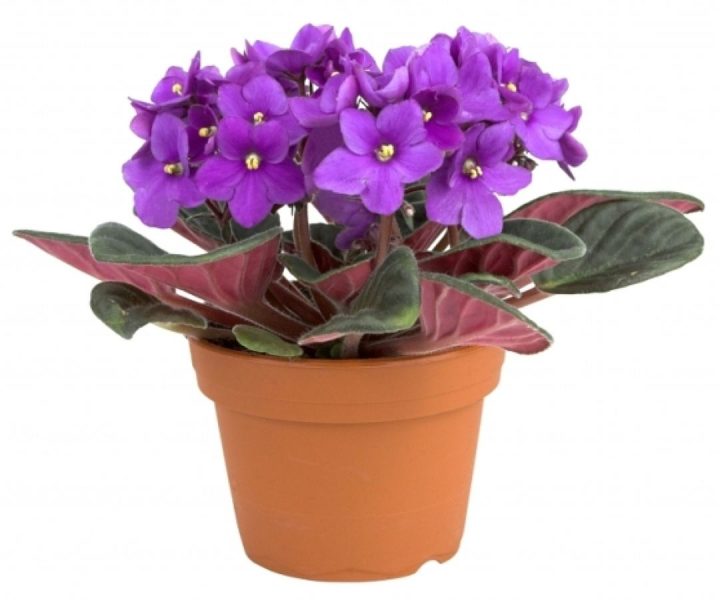
The absence of flowers in violets, as a rule, is associated with a violation of the rules for caring for the crop:
- deficiency or excess of nutrients;
- large pot sizes;
- unsuitable soil;
- non-compliance with irrigation rules;
- wrong temperature conditions;
- lack of lighting.
Important! Flowering can also depend on the variety: there are varieties that can bloom year-round, and those that after a short flowering need a long rest.
Flower growing requirements
A low perennial with racemose inflorescences from beautiful small flowers is a fairly demanding plant.
How to pick up a pot?

The correct selection of the pot is an important component of the successful cultivation of violets, the roots of which do not develop in depth, but are on the surface. The main parameters that you should pay attention to when choosing a pot include:
Dimensions

Three standard pot sizes are distinguished depending on the size and age of the senpolia:
- A 9x9 cm pot is the largest possible and suitable for an adult overgrown plant.
- Pots 7x7 cm are used for the cultivation of specimens of medium size.
- In containers of 5x5 cm, children of Saintpaulia or compact varieties are grown.
When growing a flower in a pot with a diameter of 9 cm, transplantation is carried out in containers of similar sizes, since the use of dishes of a larger diameter negatively affects the state of the culture. This is expressed in the following:
- lack of flowers for 24 months;
- the growth of green mass to the detriment of the formation of flowers, which are small and in small quantities;
- the development of fungal diseases and pests in an excess of soil not braided by the roots of the culture.
Material
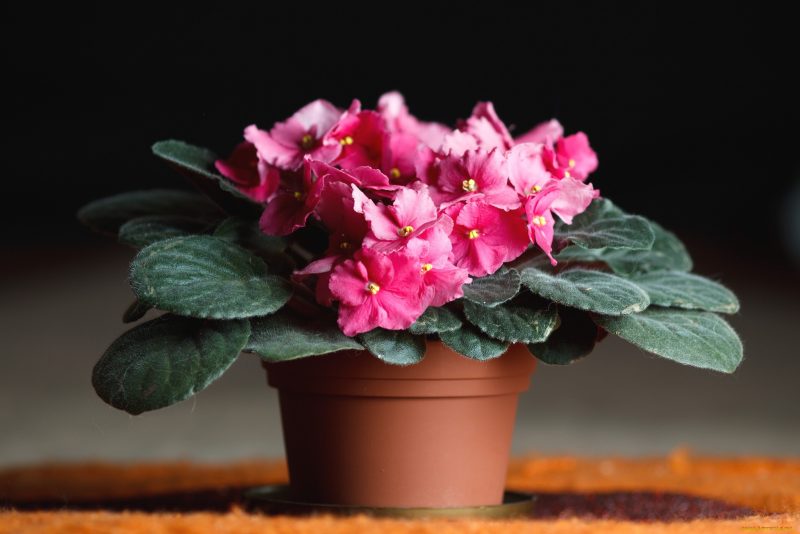
Pots used for senpolia are made of plastic and ceramics, which have their own characteristics:
- If the grower opted for lightweight, practical plastic, he will need to make additional holes on the sides of the pot for air access, so that the root system is freely ventilated and the soil does not sour.
- When buying a ceramic container that is distinguished by its fragility and heaviness, you should pay attention only to containers that are not covered with glaze, which can pass air.
Correct soil
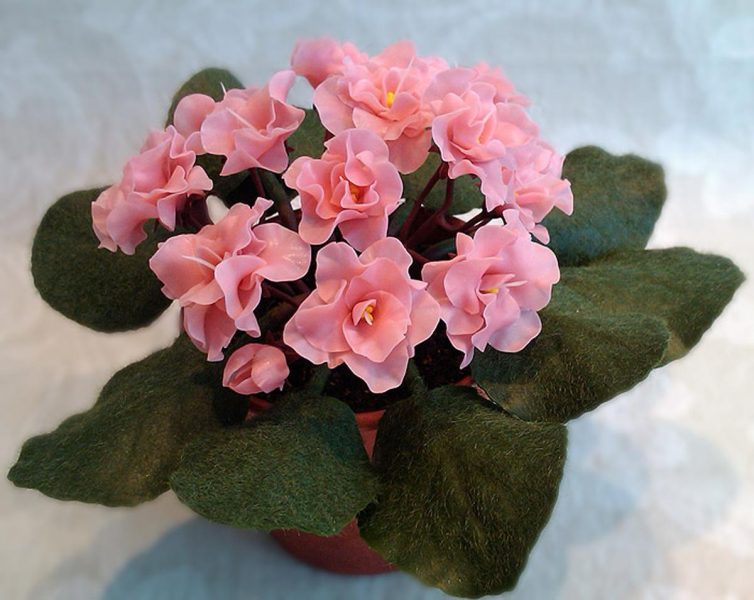
Currently, specialized flower shops present a wide selection of substrates intended for growing violets. But because of the light structure during irrigation, water does not saturate the soil mixture, but flows between it and the walls of the pot. To avoid such difficulties, it is possible to prepare a loose substrate that allows the roots to breathe independently from garden soil and sand in a 2: 1 ratio. Before filling the pot, it should be calcined to destroy harmful organisms and placed in a container on top of the expanded clay drainage layer.
How to care for violets?
Violet, subject to the necessary conditions of detention, is an excellent decoration of the home.
Lighting
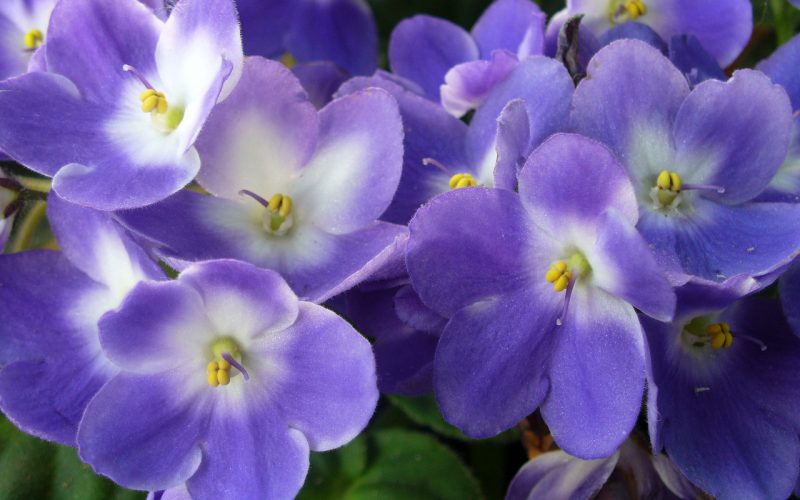
To place the pot, a well-lit place is chosen without direct sunlight, which can leave burns on the leaves of the flower. For this, window sills on the north, northwest and northeast sides of the house are well suited. If this is not possible, you will have to create artificial shading by placing the violet on the sunny sides. In order for the violet to bloom profusely for a long period, it needs to receive light for 10-12 hours, which in the autumn-winter period can be achieved by artificial lighting with fluorescent lamps.
Advice! Constant monitoring of the senpolia allows us to determine the adequacy of lighting: with an excess of light, the foliage of the culture wilts down, and with a deficit it stretches up.
Temperature mode
The optimum temperature to ensure flowering varies between 20-22 ° C. If you contain violet in such conditions, a wide and bright edging is clearly manifested, the greens become more saturated. While flowering in the summer period, at hot temperatures from 28 ° C, is not so intense, small flowers, pale greenery and the absence of a border on it. Being in such conditions is disastrous for violets. To reduce the inhibitory factor, you can use air conditioning, a fan or ventilation.
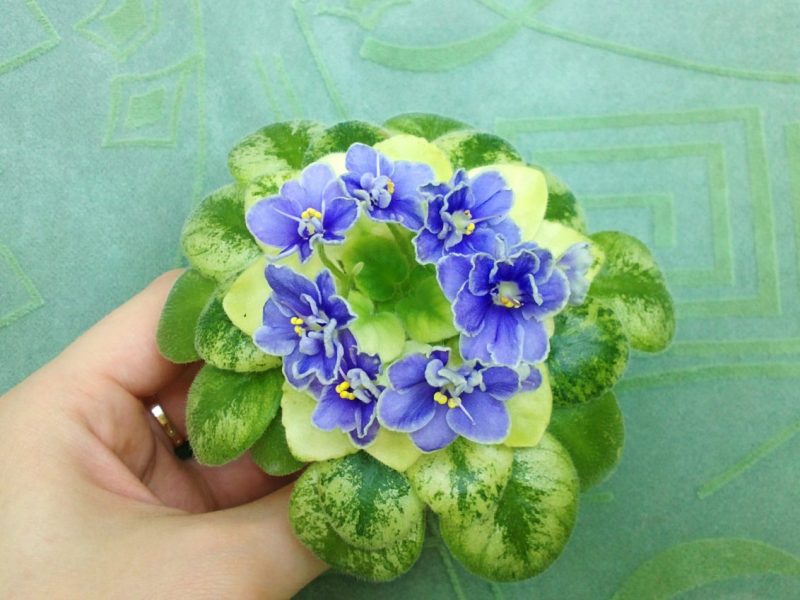
In winter, one must not allow overcooling of a culture that can cause root decay, in which only over-rooting can save the plant. And also it is worth protecting the violet from the streams of cold air, because of which the culture loses its decorative effect: beige spots appear on the leaf plates.
Watering
For moistening, which is carried out after drying of the soil, warm and settled water is used for 3 days. Violet does not like excessive watering, but the complete lack of moisture negatively affects the condition of the plant.
Humidification can be done in several ways:
- Water is poured into the pan, where a pot with a flower is placed for half an hour.
- At temperatures above 22 ° C, the flower is carefully watered from above so that the drops do not fall into the outlet.
Caution! The violet cannot be sprayed, but it is necessary to maintain a high level of air humidity by placing a container of water near the flower.
Feeding violets

Additional nutrition is provided during the period of intensive development:
- For young plants, fertilizing is carried out using nitrogen-containing fertilizers.
- Adult specimens need potassium and phosphorus, which contribute to intensive budding and flowering.
Important! Excess nitrogenous fertilizers in the substrate can cause a lack of flowers.
Proper maintenance of violets in the winter

In winter, the main care procedures remain:
- Providing additional lighting and temperature conditions not lower than 20 ° C without hypothermia during ventilation.
- Watering thrice a week with warm water.
- Maintaining high humidity in the room where the flower is located.
Care after flowering
If Saintpaulia pleased the florist with plentiful and prolonged flowering, it is worth taking care of restoring its vitality by breaking off the lower rows of leaf blades and replanting into a new substrate. In the absence of such an opportunity, you can limit yourself to fertilizer application.
Important! During flowering, one must not forget about the timely removal of faded inflorescences.
How to propagate a violet?
Senpolia can reproduce in a generative and vegetative way. Since it is impossible to maintain varietal characteristics with the seed method, the simplest and most productive technique is cuttings.
Leaf propagation is carried out throughout the year, while:
- A well-developed leaf plate is separated along with the petiole and placed in a container with water.
- After root formation, the stalk is planted in a pot with a soil mixture.
Or:
- The sheet is placed immediately in a special substrate, after which the dishes with the handle are covered with glass and a warm room with good lighting moves, where there is no access to direct sunlight.
- The substrate is systematically moistened with a spray gun.
Root formation can take a long time, so do not rush to get rid of the cuttings for this reason.
How to plant children?
Adult plants, growing, form children, which often hamper the development of the maternal outlet. In such situations, it is necessary to carry out the procedure for separating daughter bushes, which is better to carry out in the summer, so that the mother plant has enough time to recover by the arrival of winter.
For this:
- The baby gently digs out with a sharp object so as not to damage the mother outlet.
- With many leaves and a small number of roots, part of the leaves on a separate outlet is cut off.
- The baby is placed in a flower pot with a substrate similar in composition to the soil mixture in a container with a maternal specimen.
- The new plant is moderately moistened and moves to a warm place with plenty of diffused light.
Plant diseases and pests
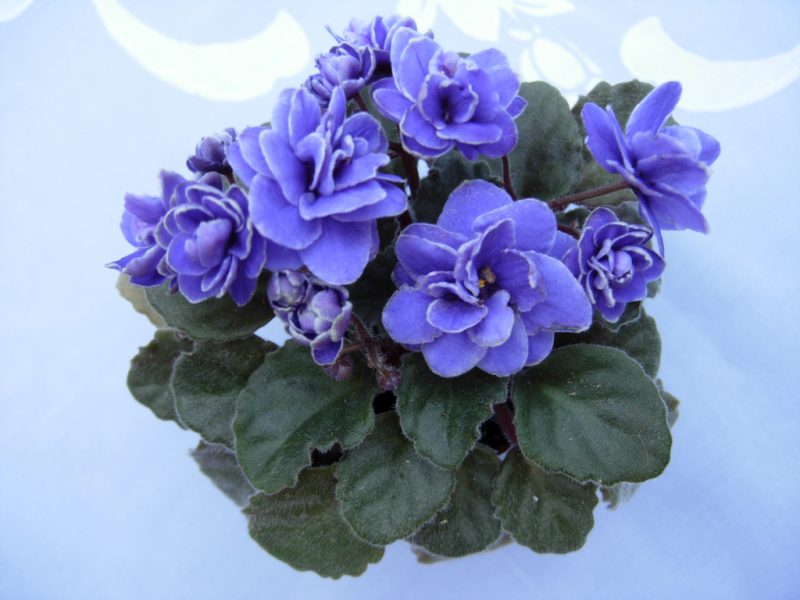
Despite the resistance of violets to diseases, the manifestations of the fungal disease of late blight in the form of brownish spotting are often observed on the tropical representative. There is practically no point in fighting it, so it is necessary to stop the possibility of spreading to healthy specimens by destroying the affected plant and substrate. Of the pests, the most dangerous are nematodes: damaging the root system, they make impossible the further nutrition of the flower, after which the latter dies. To prevent the possibility of infection of violets, the substrate for pots should be purchased in stores or well calcined in the oven.
So, the violet flower, being a representative of the tropical flora, has a rather capricious disposition.However, subject to the rules of care, the florist will receive a lot of positive emotions from the abundantly flowering plant, which adorns the dwelling with its beauty almost all year round.












